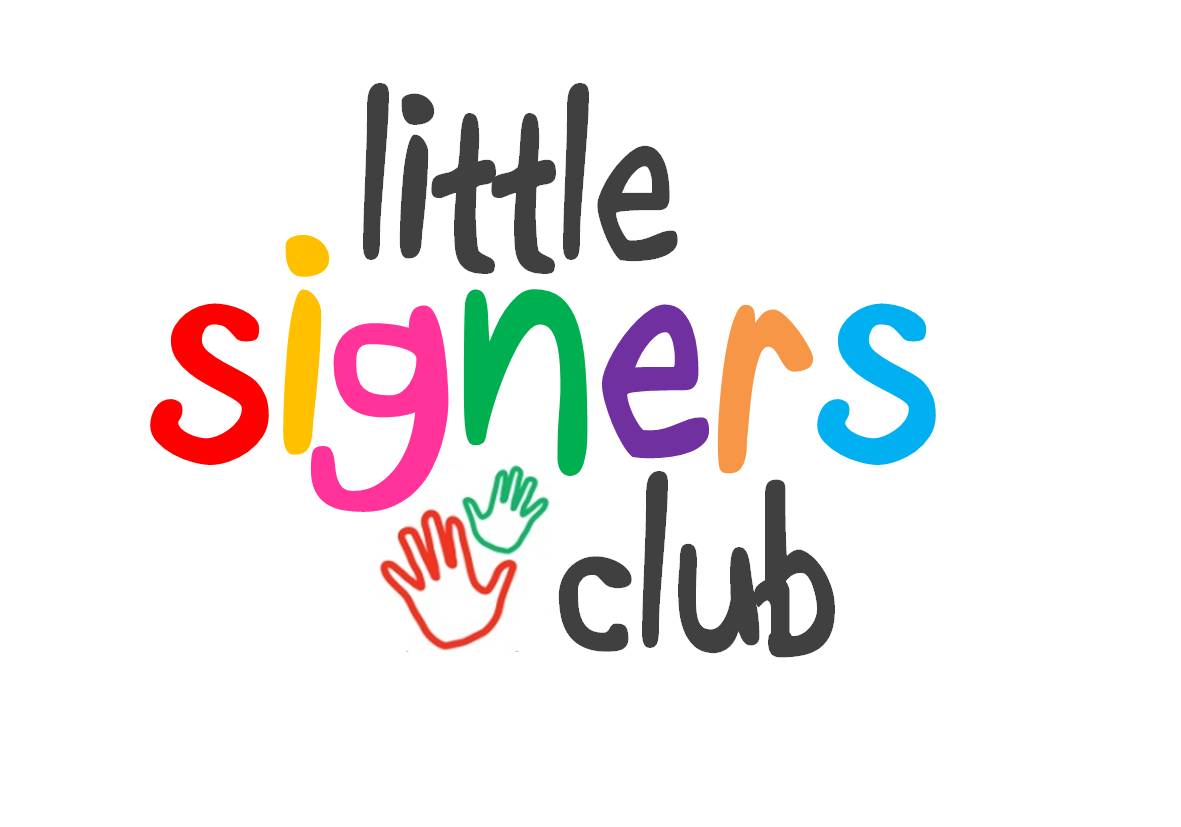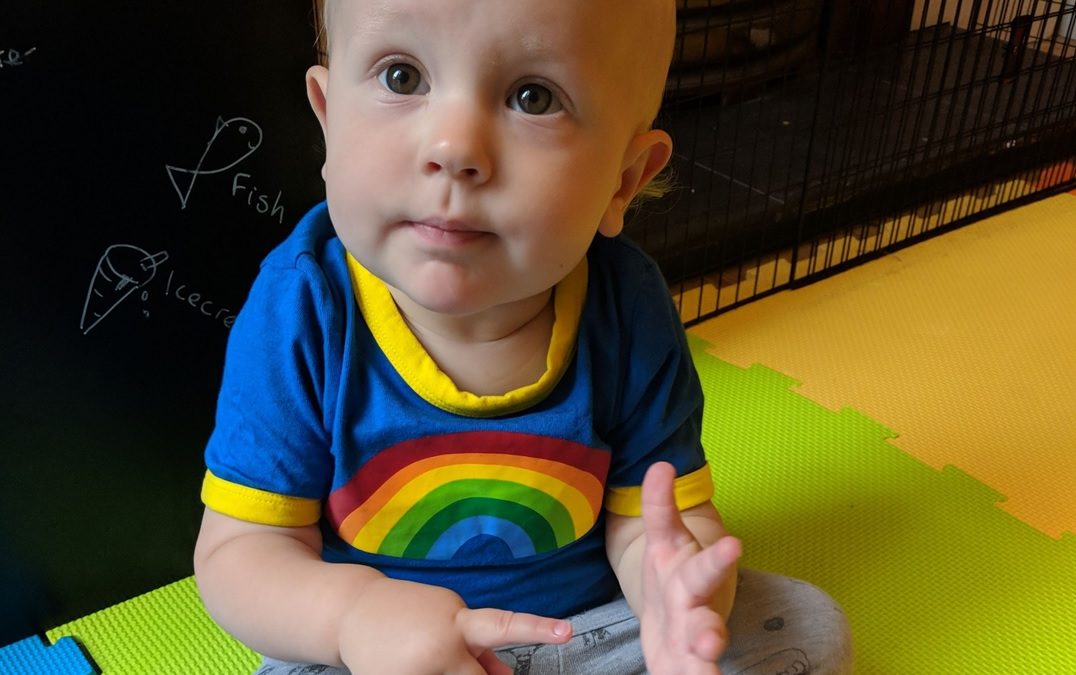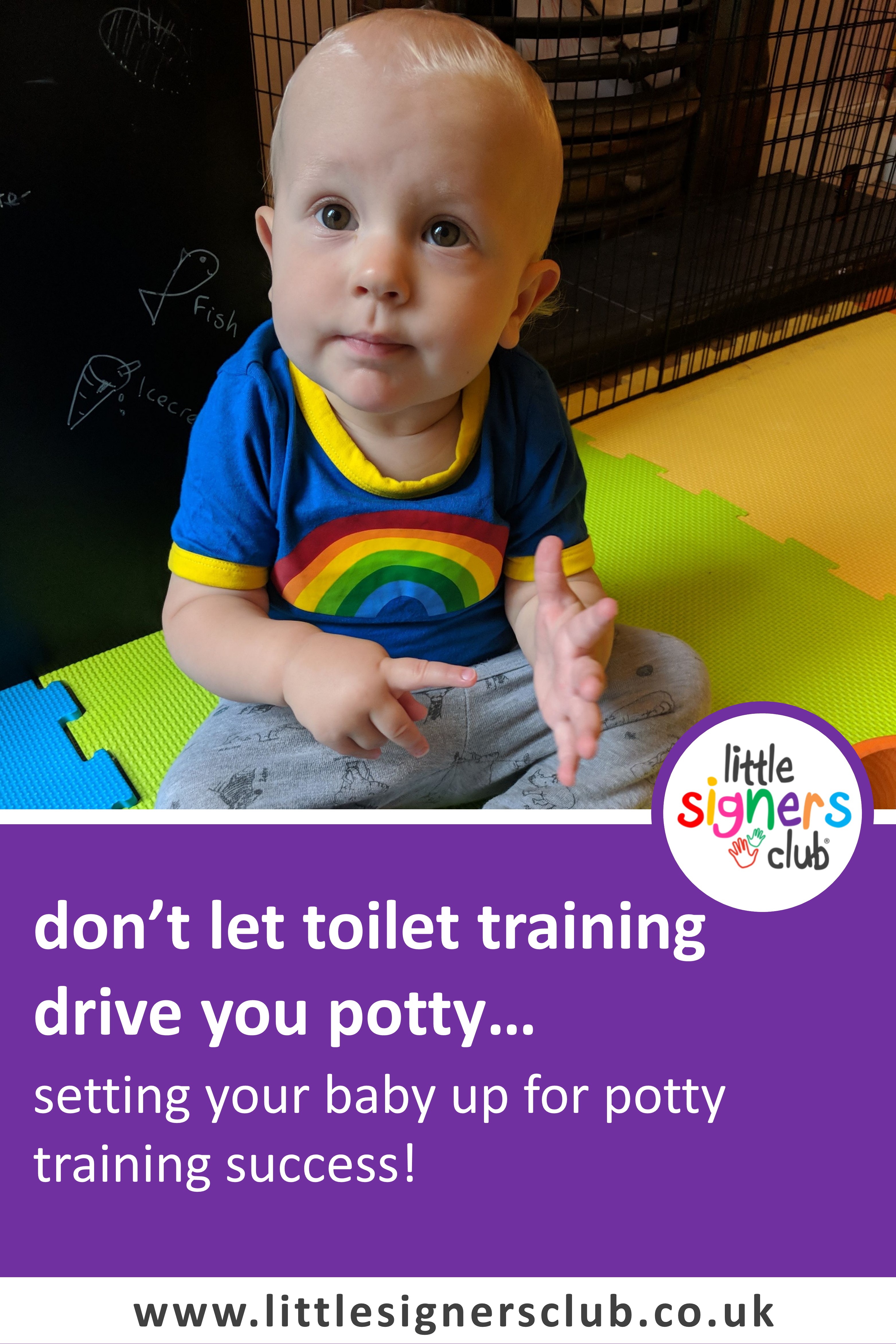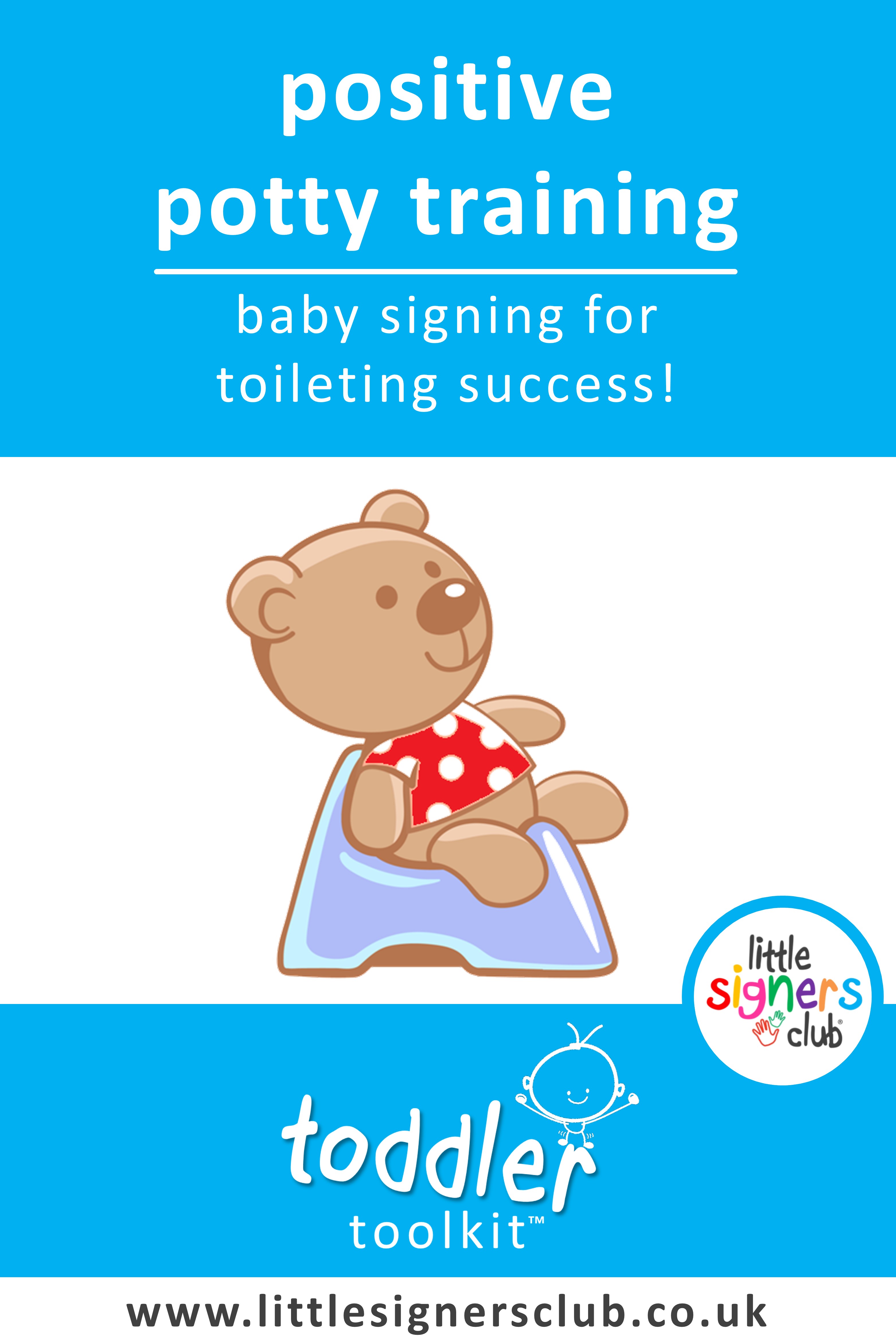Don’t Let Toilet Training Drive You Potty….
Are you starting to train your little one to use the toilet?
What if I told you there’s a hack for that?
One which would let your little one tell you, from around four months old, that they needed a nappy change.
One which would let your toddler tell you they needed the toilet, without any fuss?
Baby Signing, using British Sign Language, lets parents and carers communicate with their little ones quickly and easily and in a way which is compatible with little one’s developmental stages.
“If you’re relying on speech as the only means for your little one to communicate with you, you are missing a trick..”
If you’re relying on speech as the only means for your little one to communicate with you, you are missing a trick.
Your baby’s comprehension and understanding is at around 6 months ahead of their ability to communicate with you, and the main way children learn is kinaesthetically – through action.
Research shows that using signs enables children to develop their language skills much earlier and with much deeper understanding than speech alone.
When can you start to use signs for potty training?
Using the signs for ‘toilet’ or ‘nappy change’ from 3 months, will mean that by the time you are ready to start potty training, your little one will know the signs and be able to quickly and easily show you – without shouting ‘I NEED A POO’ across the entire room – that they need to ‘go’.
If you’ve already started training, but your little one is a bit ‘hit and miss’, try adding the signs in now.
Children will find using gesture (signing) much quicker than to remembering the sounds, coordinating the mouth, regulating their breath and then making the right word. When time is of the essence, signing is so much easier for little ones – and, when used properly, will help to develop speech and communication skills.
“When time is of the essence, signing is much easier for little ones – and, when used properly, will help to develop speech and communication skills.“
Top Tips For Successful Signing:
ALWAYS say the word as your sign it; signing will enhance your little one’s speech development, but only if used correctly.
REPEAT, REPEAT, REPEAT. Every time your little one goes to the toilet, show them the sign. Before (if you can), during and after the event. You know how kids want the same book over and over and over? Repetition is how they learn.
PERSEVERE. It may take time, especially for younger children, but give it time and one day they will surprise you!
BABY SIGNS DON’T LOOK THE SAME. It takes years for children’s fine motor skills to develop – even at five years old they are still developing their dexterity. Signing will help this develop much more quickly, but don’t expect perfection at first.
PRAISE. If you think your little one is attempting a sign, respond to it. (Obviously get them to the toilet/change their nappy asap!). Tell them ‘well done, you’re telling me xx’ then repeat the sign and say the word again.

Jo
Little Signers Club | North London
Jo delivers Little Signers Club Baby Signing classes in the Haringey area and to private organisations and networks across London. Little Signers Club uses British Sign Language to aid children from 3 months to 5 years with to communicate more effectively with their important grown ups. Classes are fun, friendly and fully inclusive. Say Hello!







